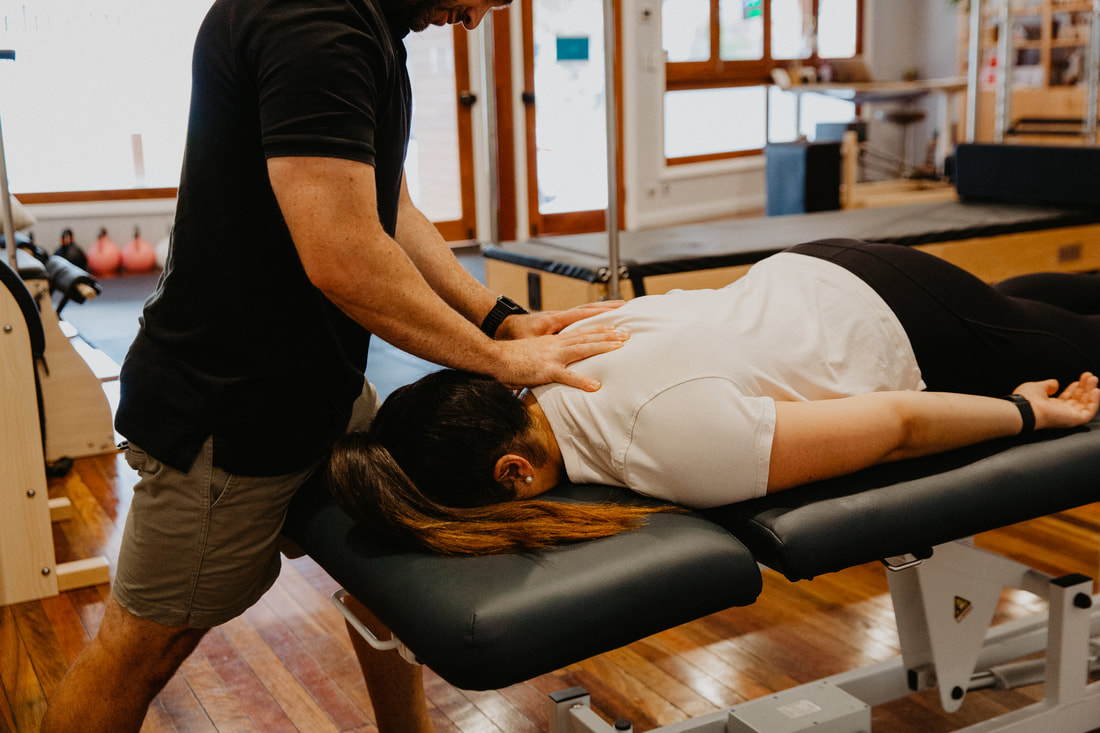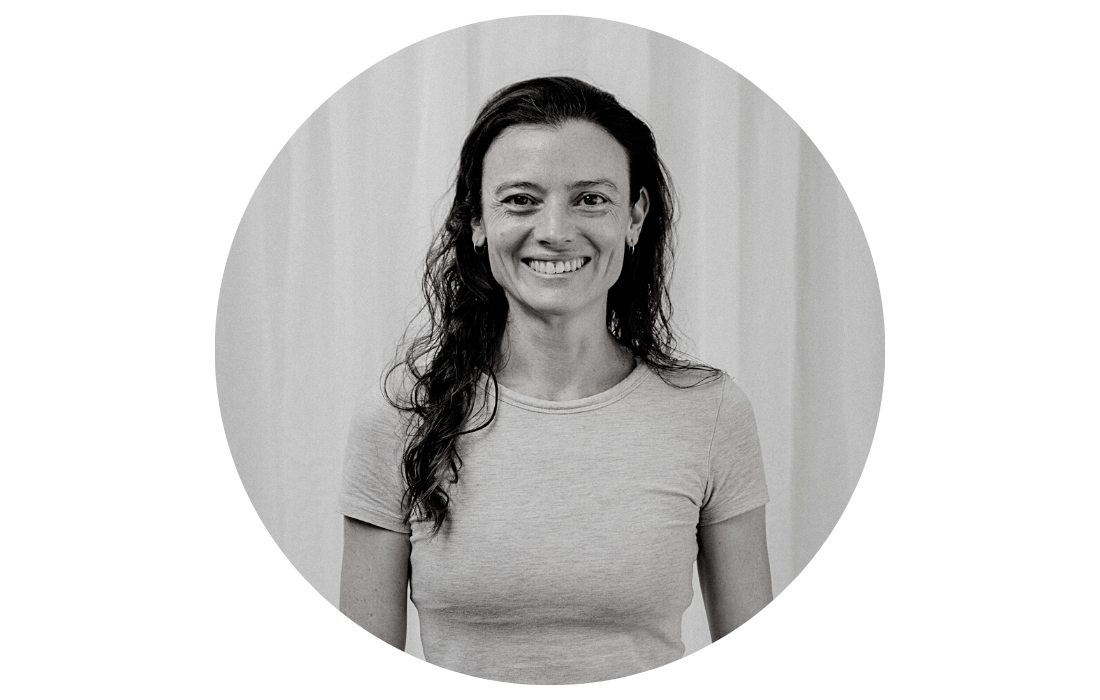Sciatica physiotherapy Brisbane southside.
Sciatica (also known as radiculopathy) is a term used to describe pain felt along the sciatic nerve which runs from your lumbar spine (lower back), down through the buttock, hamstrings and even into the lower leg. This can happen on one side (left or right) or both sides at the same time. The main nerve that travels from your lower back (L4, L5 or S1) to your leg is your sciatic nerve - it is the longest nerve in the body, and irritation or pinching of your sciatic nerve can cause this severe leg pain. Leg pain can have various other sources so it is important to have a physiotherapist assess any pain through this area to rule out other possible conditions, as well as finding the cause of the problem. Issues such as a herniated disc, spinal stenosis, degenerative disc disease, arthritis, and spondylolisthesis can all cause sciatica and the course of action to treat each one will vary.
How is sciatica diagnosed?
A physiotherapist will perform a thorough physical examination to diagnose sciatica. They may also order imaging tests, such as an X-ray, MRI, or CT scan, to identify the underlying cause of the condition. The physiotherapist will also evaluate the patient's medical history, symptoms, and lifestyle factors to determine the most effective treatment plan.
How can physiotherapy help after a Sciatica diagnosis?
Physiotherapy is an effective treatment option for sciatica. The physiotherapist will work with the patient to develop a customized treatment plan that includes exercises, manual therapy, and education. The goals of physiotherapy are to reduce pain, improve mobility, and prevent future episodes of sciatica. The physiotherapist may use a variety of techniques, such as stretching, strengthening, and mobilisation, to achieve these goals.
Sciatica and its symptoms often respond well to a tailored personal exercise plan with a focus on reducing pain and improving your tolerance to daily activities and function. Your physiotherapist is able to assess you and determine the diagnosis of your sciatica symptoms and tailor a rehabilitation and symptom modification program. The choice of exercise may include strengthening, stretching, mobility and aerobic styles, or alternatively looking at options such as rest, painkillers, referral to a specialist and even epidural injections or surgery. No one form of exercise is the answer - the severity and intensity of sciatic symptoms can vary from presentation to presentation and person to person resulting in a need to be flexible with the exercise and rehabilitation plan.
Examples of exercises your physiotherapist may recommend include:
How can clinical Pilates help with a Sciatica?
Clinical Pilates is a form of exercise that focuses on strengthening the core muscles and improving posture. It can be an effective treatment option for sciatica, as it can help to relieve pressure on the sciatic nerve. Clinical Pilates exercises can also help to improve flexibility and reduce muscle tension. A physiotherapist who specialises in clinical Pilates can work with the patient to develop a safe and effective exercise program that meets their individual needs.
Other treatment options for sciatica
In addition to physiotherapy and clinical Pilates, there are other treatment options for sciatica. These may include medication, such as non-steroidal anti-inflammatory drugs (NSAIDs) or muscle relaxants, or injection therapy, such as corticosteroid injections. In some cases, surgery may be required to relieve pressure on the sciatic nerve.
At Articulate Physiotherapy our physiotherapists can thoroughly assess and diagnose both symptoms of sciatica and it's causes. We'd love to see you soon - why not call us on 07 3706 3407 or email [email protected] to make an appointment with one of our incredible Tarragindi physios!
How is sciatica diagnosed?
A physiotherapist will perform a thorough physical examination to diagnose sciatica. They may also order imaging tests, such as an X-ray, MRI, or CT scan, to identify the underlying cause of the condition. The physiotherapist will also evaluate the patient's medical history, symptoms, and lifestyle factors to determine the most effective treatment plan.
How can physiotherapy help after a Sciatica diagnosis?
Physiotherapy is an effective treatment option for sciatica. The physiotherapist will work with the patient to develop a customized treatment plan that includes exercises, manual therapy, and education. The goals of physiotherapy are to reduce pain, improve mobility, and prevent future episodes of sciatica. The physiotherapist may use a variety of techniques, such as stretching, strengthening, and mobilisation, to achieve these goals.
Sciatica and its symptoms often respond well to a tailored personal exercise plan with a focus on reducing pain and improving your tolerance to daily activities and function. Your physiotherapist is able to assess you and determine the diagnosis of your sciatica symptoms and tailor a rehabilitation and symptom modification program. The choice of exercise may include strengthening, stretching, mobility and aerobic styles, or alternatively looking at options such as rest, painkillers, referral to a specialist and even epidural injections or surgery. No one form of exercise is the answer - the severity and intensity of sciatic symptoms can vary from presentation to presentation and person to person resulting in a need to be flexible with the exercise and rehabilitation plan.
Examples of exercises your physiotherapist may recommend include:
- Walking
- Hydrotherapy (exercise in water)
- Pilates on apparatus (equipment) like we have here at Articulate Physiotherapy
- Yoga (particular styles or movements may not be recommended)
- Hamstring and gluteal stretches
- Abdominal, spine and pelvic strengthening exercises
How can clinical Pilates help with a Sciatica?
Clinical Pilates is a form of exercise that focuses on strengthening the core muscles and improving posture. It can be an effective treatment option for sciatica, as it can help to relieve pressure on the sciatic nerve. Clinical Pilates exercises can also help to improve flexibility and reduce muscle tension. A physiotherapist who specialises in clinical Pilates can work with the patient to develop a safe and effective exercise program that meets their individual needs.
Other treatment options for sciatica
In addition to physiotherapy and clinical Pilates, there are other treatment options for sciatica. These may include medication, such as non-steroidal anti-inflammatory drugs (NSAIDs) or muscle relaxants, or injection therapy, such as corticosteroid injections. In some cases, surgery may be required to relieve pressure on the sciatic nerve.
At Articulate Physiotherapy our physiotherapists can thoroughly assess and diagnose both symptoms of sciatica and it's causes. We'd love to see you soon - why not call us on 07 3706 3407 or email [email protected] to make an appointment with one of our incredible Tarragindi physios!
Who to book in with:
Monica Hanna
|
Emma Cameron
|
Mauricio Bara
|



